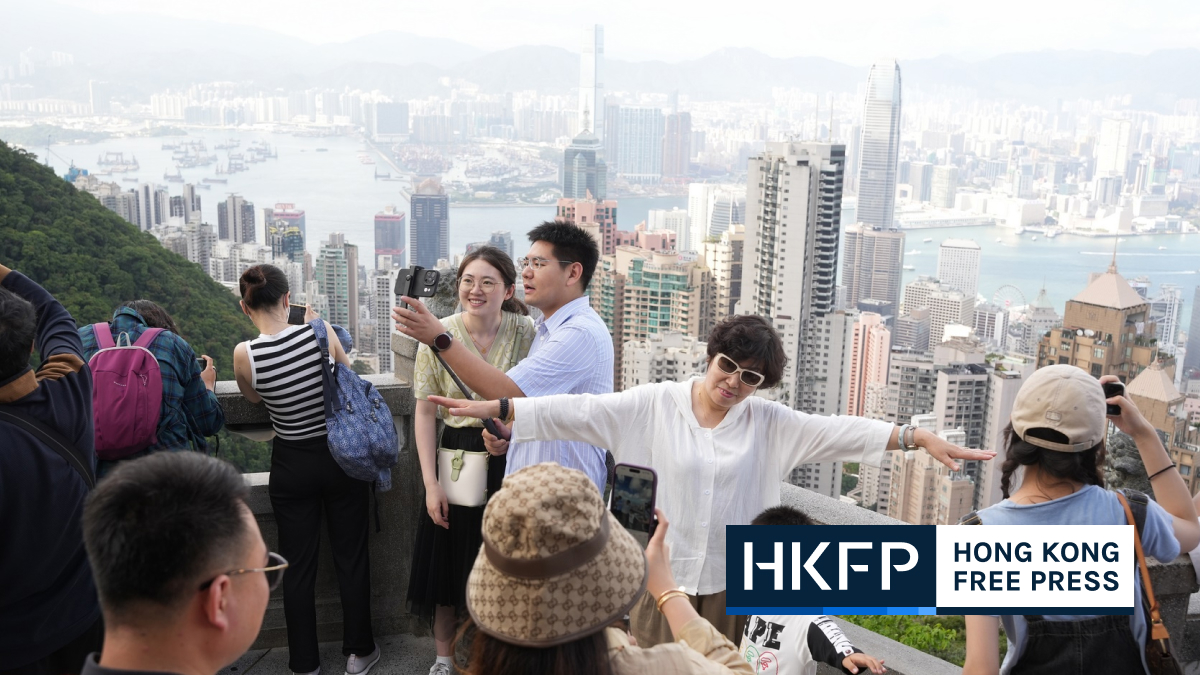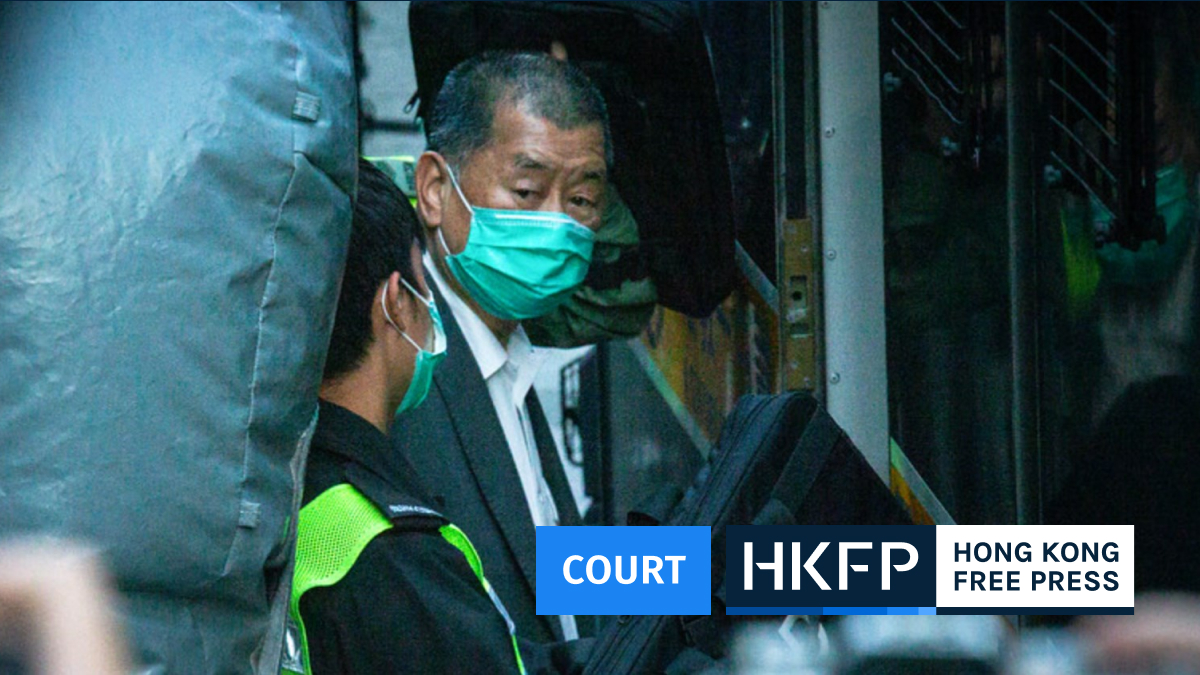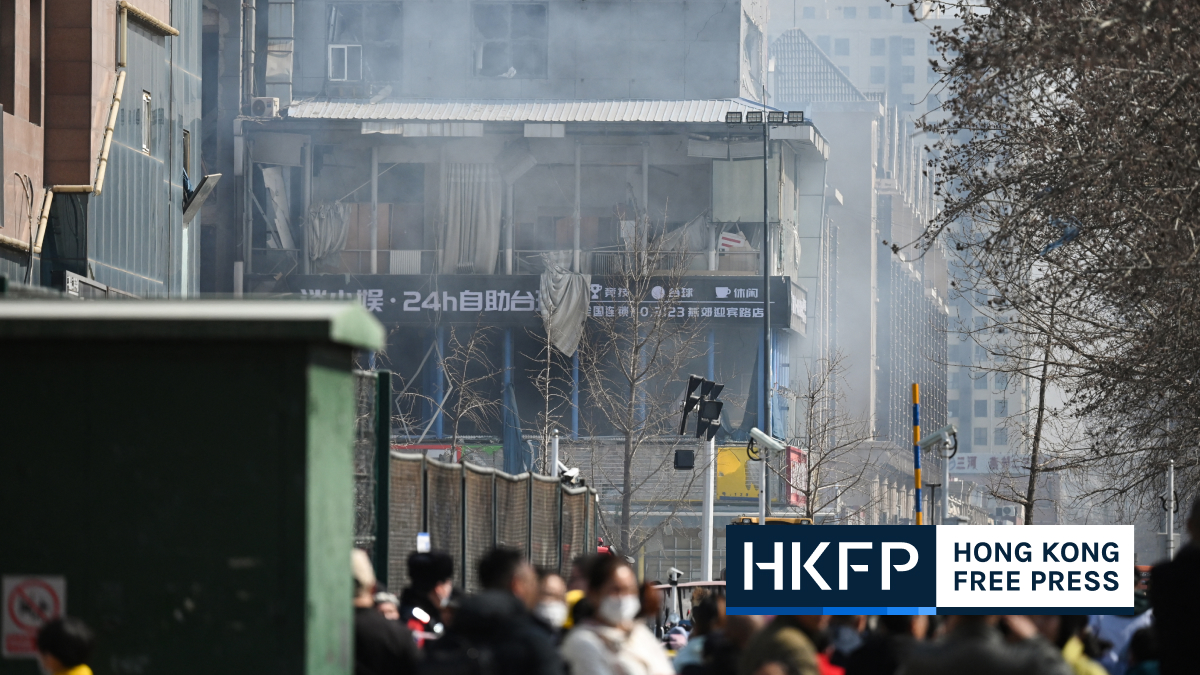Thousands of mainland Chinese visitors have flocked to Hong Kong as the city marked China’s National Day on Sunday, its first since all Covid-19 restrictions were lifted earlier this year.

Many arrived in Hong Kong from all over China on high-speed trains via West Kowloon Station on Sunday morning. However, several said they would only stay in the city for a short trip.
In the station’s arrivals hall, families, couples and individuals speaking Mandarin were seen ferrying luggage and seeking the quickest route to their destinations. Some declined to be interviewed by HKFP, saying they were just in Hong Kong for the day and did not have time to stop.
“We are visiting [Hong Kong] for two-to-three days,” a couple from Hangzhou, who gave their names as Elena Gao and Knight Li, told HKFP in Mandarin.
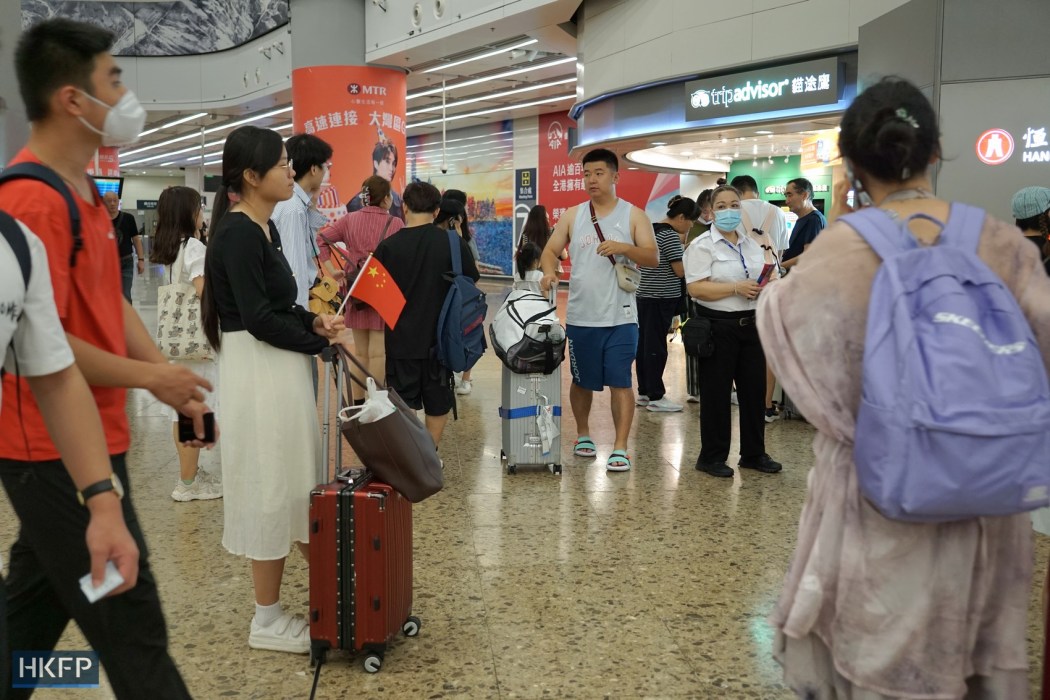
Another couple from Hangzhou, Susie Zhan and Wang, also said they would stay in Hong Kong for two days before travelling to Macau.
When asked about their plans in the city, both couples said they would rely on travel guides published on Chinese social media and e-commerce platform Xiaohongshu, which is increasingly popular among young mainland Chinese in search of novel locales to visit.
Gao and Li, said they believed that Hong Kong was similar to mainland Chinese cities in terms of prosperity.
“We are looking for a nostalgic feeling in Hong Kong,” said Gao, referring to the impression she had of the city while scrolling on Xiaohongshu.
Meanwhile, some mainland tourists were already leaving on Sunday morning, including Shenzhen residents Yu and Li, who were off to catch the train home after completing their three-day trip.
Slow recovery of tourism sector
Tourism representatives earlier estimated that around 1 million mainland Chinese tourists were expected to visit Hong Kong during the “Golden Week” holiday, which spanned eight consecutive days from Friday. It is also the first Golden Week since Beijing lifted all Covid-19 restrictions and overseas travel curbs.
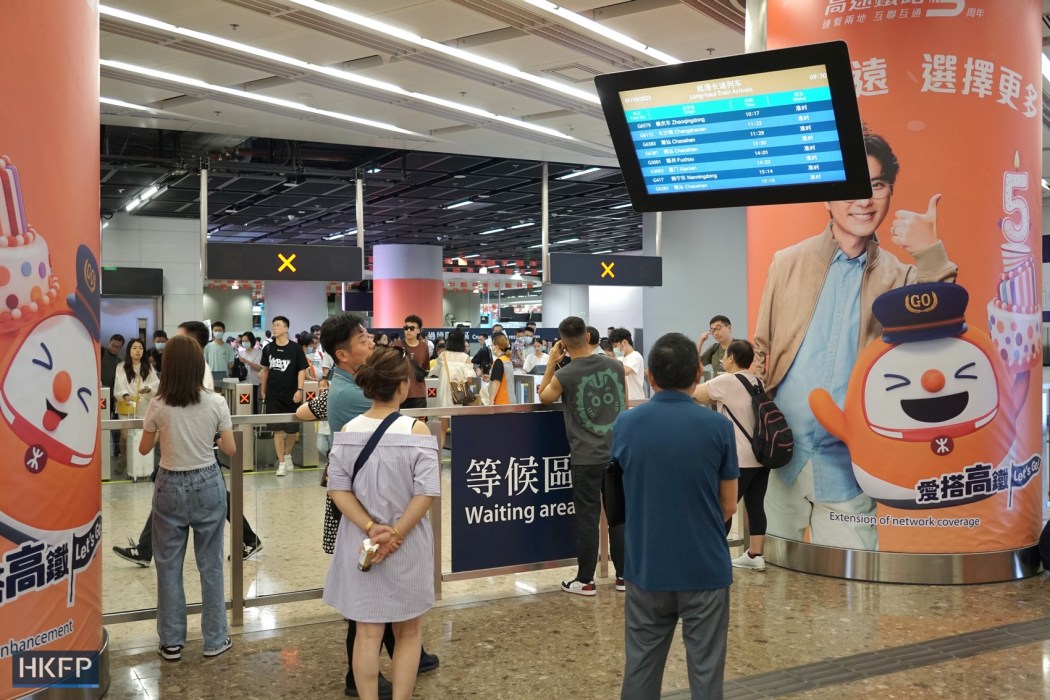
Citing travel industry experts, local media reported that travellers were planning shorter trips compared with pre-pandemic levels. Roy Lo, secretary of TIC and an owner of a travel agency, told Sing Tao Daily in mid-September that mainland Chinese tourists’ spending had also dropped.
Lo said the decline was attributed to China’s economic downturn and the depreciation of China’s currency, the Yuan. He said he believed spending would increase again once the Yuan strengthened.
Hong Kong’s tourism sector – a pillar industry that contributed 3.6 per cent of the city’s gross domestic product and employed around 232,700 people in 2019, according to government figures – was particularly devastated by Covid-related travel restrictions, which essentially isolated the city for almost three years.
Since fully reopening its borders in February, visitor arrivals have risen, led by those from mainland China, but still lag behind pre-pandemic levels.
Hong Kong welcomed 4.07 million visitors in August, up 14 per cent from the previous month, according to provisional data from the Hong Kong Tourism Board (HKTB). In August 2018, the city saw nearly 6 million visitors. And even during the height of the pro-democracy protests and unrest in August 2019, the city welcomed 3.59 million arrivals.
The HKTB has blamed “currency exchange rates, airline capacity and the global economic outlook” as factors affecting the pace of the tourism reboot.
Support HKFP | Policies & Ethics | Error/typo? | Contact Us | Newsletter | Transparency & Annual Report | Apps
Help safeguard press freedom & keep HKFP free for all readers by supporting our team

LATEST FROM HKFP
HKFP has an impartial stance, transparent funding, and balanced coverage guided by an Ethics Code and Corrections Policy.
Support press freedom & help us surpass 1,000 monthly Patrons: 100% independent, governed by an ethics code & not-for-profit.





